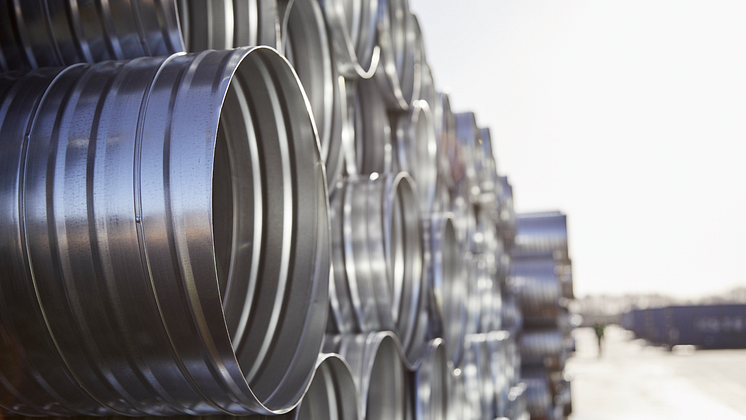Looking further on: fossil-free products and the importance of a holistic view

In a recent blog post, which you can read here, we talked about our ongoing steel journey and the offering of ventilation products in Recycled 75 steel. We also mentioned the fact that the world steel production is expected to increase from 1,950 million tonnes in 2021, to around 2,500 million tonnes in 2050. By then, 2050, the need for steel is expected to be covered by 50% with recycled steel, while the other 50% is expected to be virgin steel. Moreover, recycled steel is not available in all steel qualities.
This makes it clear that we can’t solely rely on recycled steel for the foreseeable future. We must look at alternative options, and so we have. The much-talked-about fossil-free steel from SSAB is planned for start of sales in 2026 at the earliest. Some companies already have access to limited supplies though, Lindab being one of those. We also have a delivery agreement of near-zero steel from H2 Green Steel with continuous deliveries planned to start in 2026. Near-zero steel is manufactured using new innovative technology like Direct Reduced Iron (DRI) and Electric Arc Furnace (EAF), with approximately 95% reduction in CO₂-emissions compared to traditional steel.
So how about the products, will they all be produced in all different steel types in the future? The answer is no. Some products will be in fossil-free steel while others will be produced in recycled steel. We will choose the material that is most suitable for each product. This depends on availability and technical aspects, not all products can be manufactured in recycled steel, yet another reason to work with different types of steel. For example: The high proportion of scrap means that today you get harder steel such as DX51 or similar. Steel used for pressed products is softer and we cannot buy that in recycled steel yet. When it all comes down to it, the basic idea is rather simple; the right product in the right material.
With all this being said, it’s of the outmost importance that low climate impact from the materials we chose is accompanied with energy efficiency and the fact that our products deliver a great indoor climate. This holistic view of our sustainability work is key to make sure that the sum really is greater than its parts. We cannot focus more on one of the parts and forget the other, because then we will not build sustainable properties over time. It’s all part of the sustainable equation.
Read more about decarbonised steel here.
Contact
Matilda Isaksson
Group Sustainability Manager
